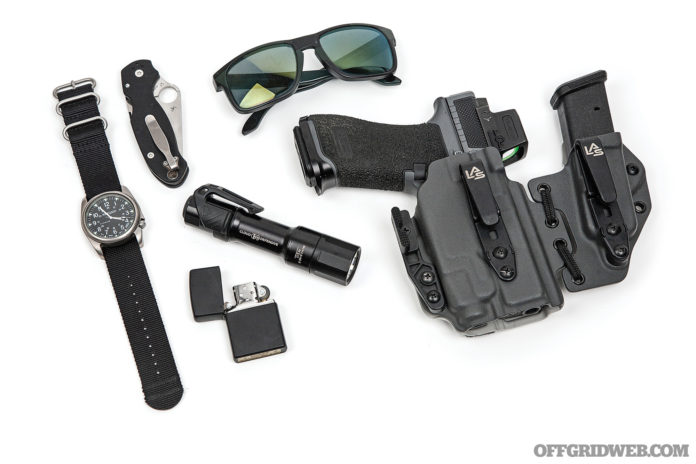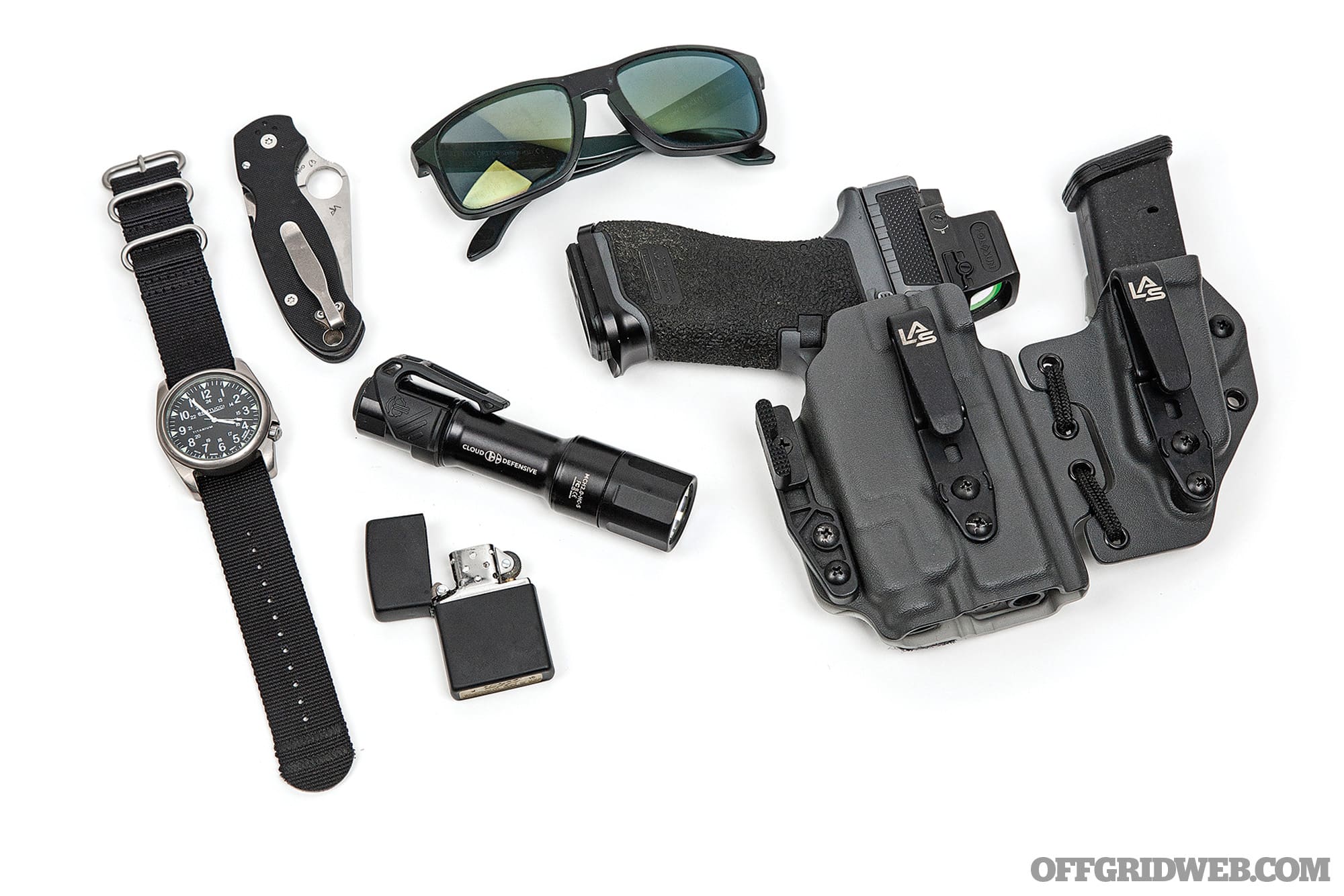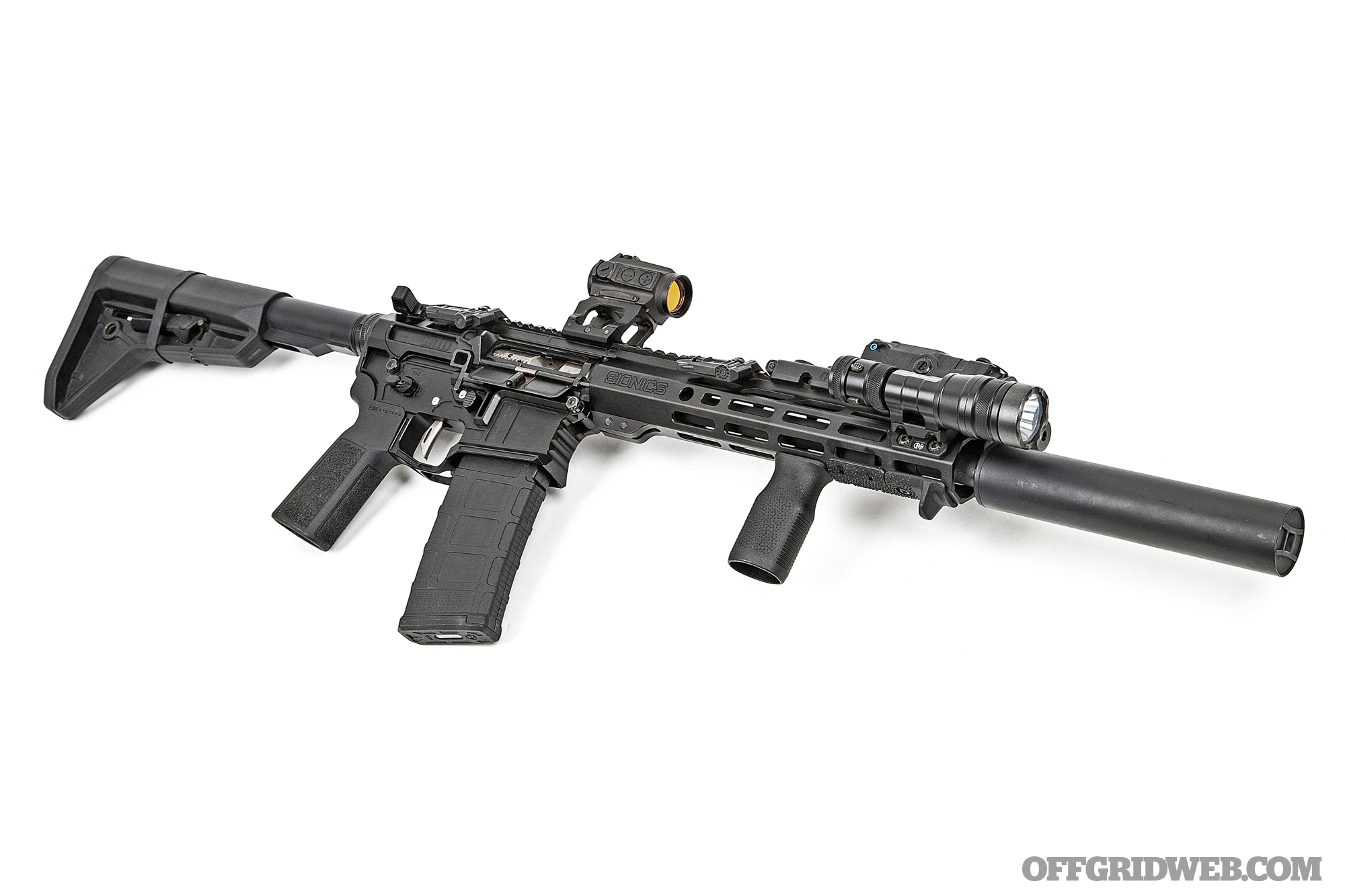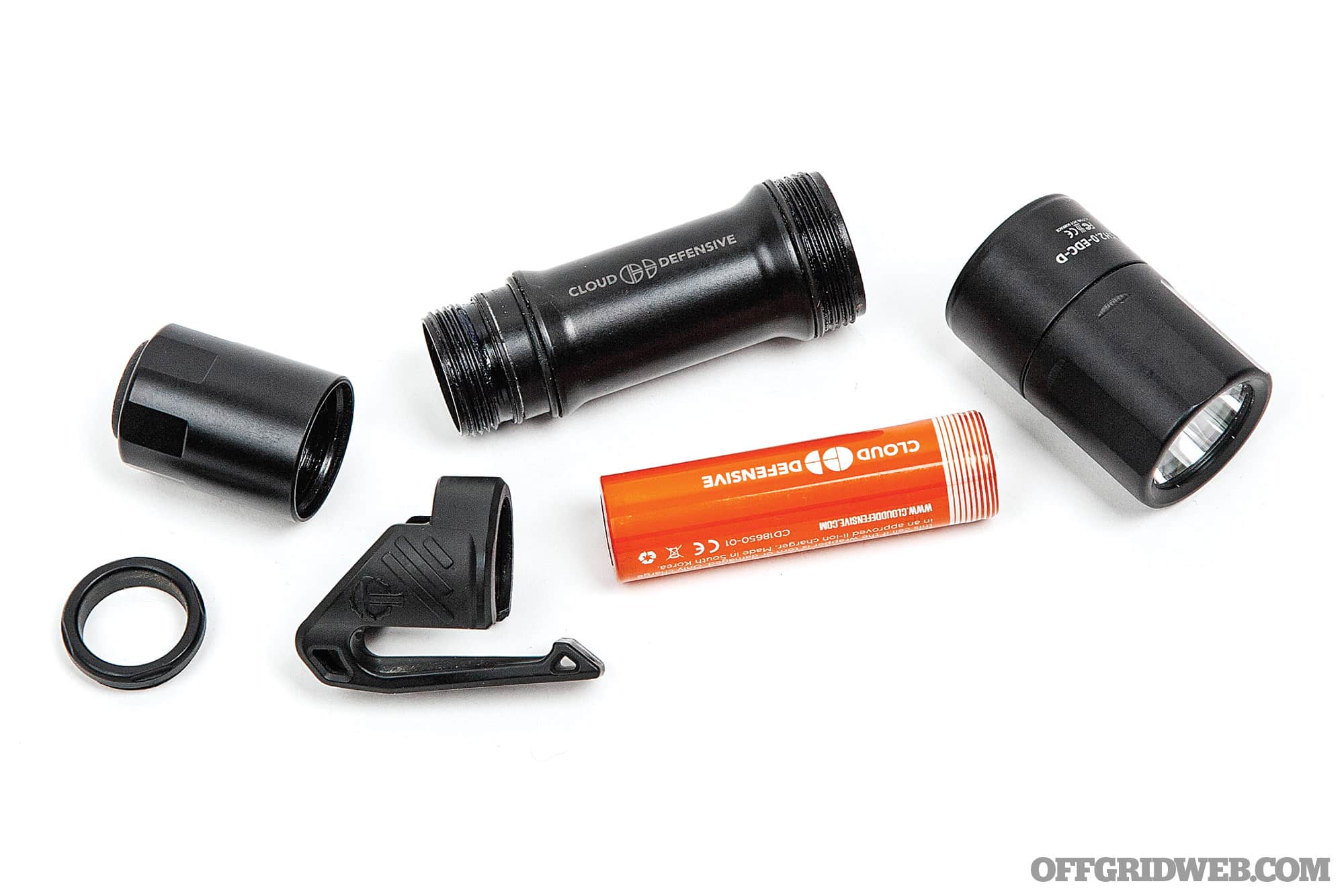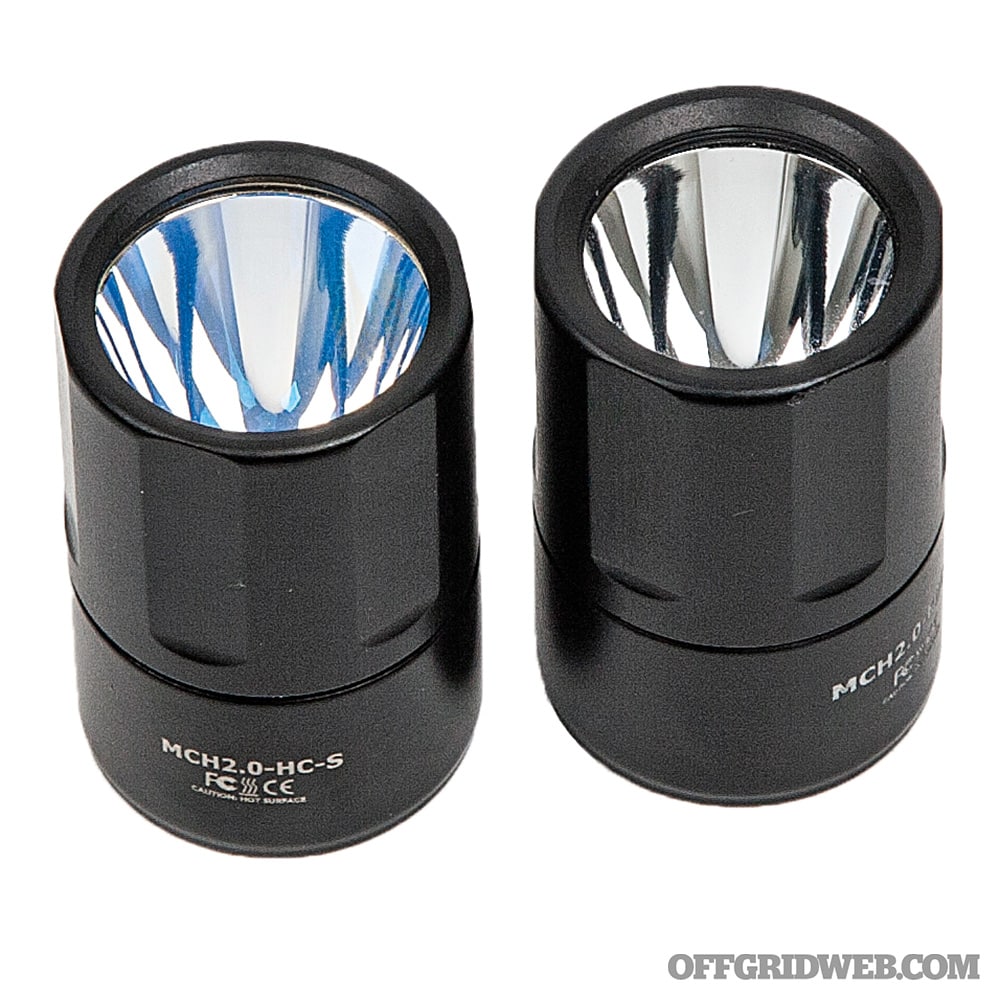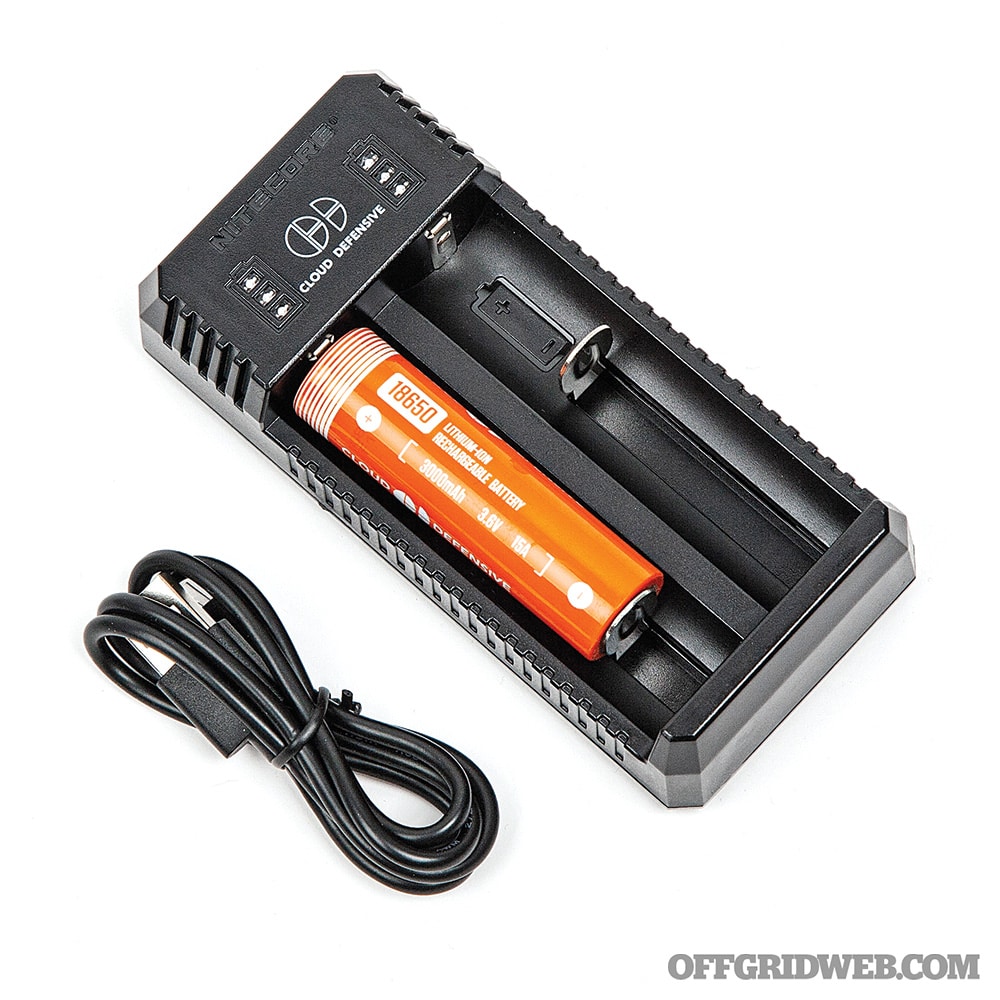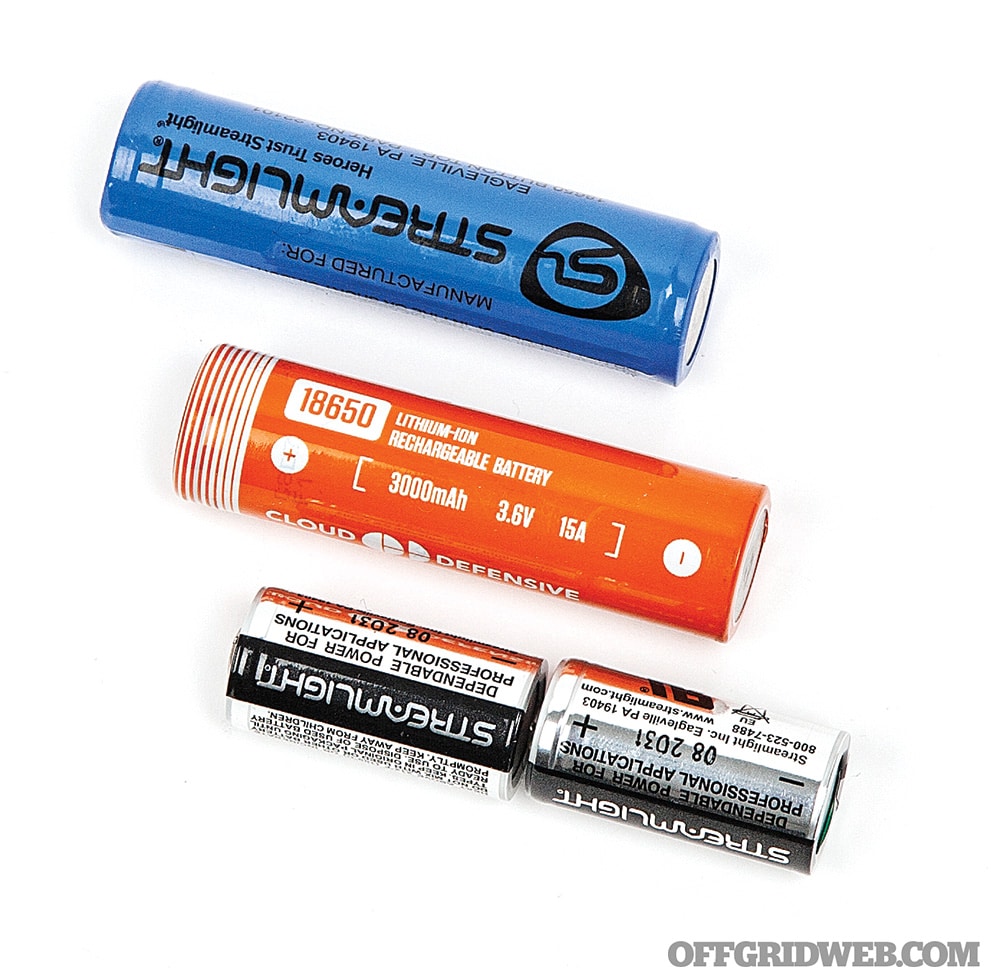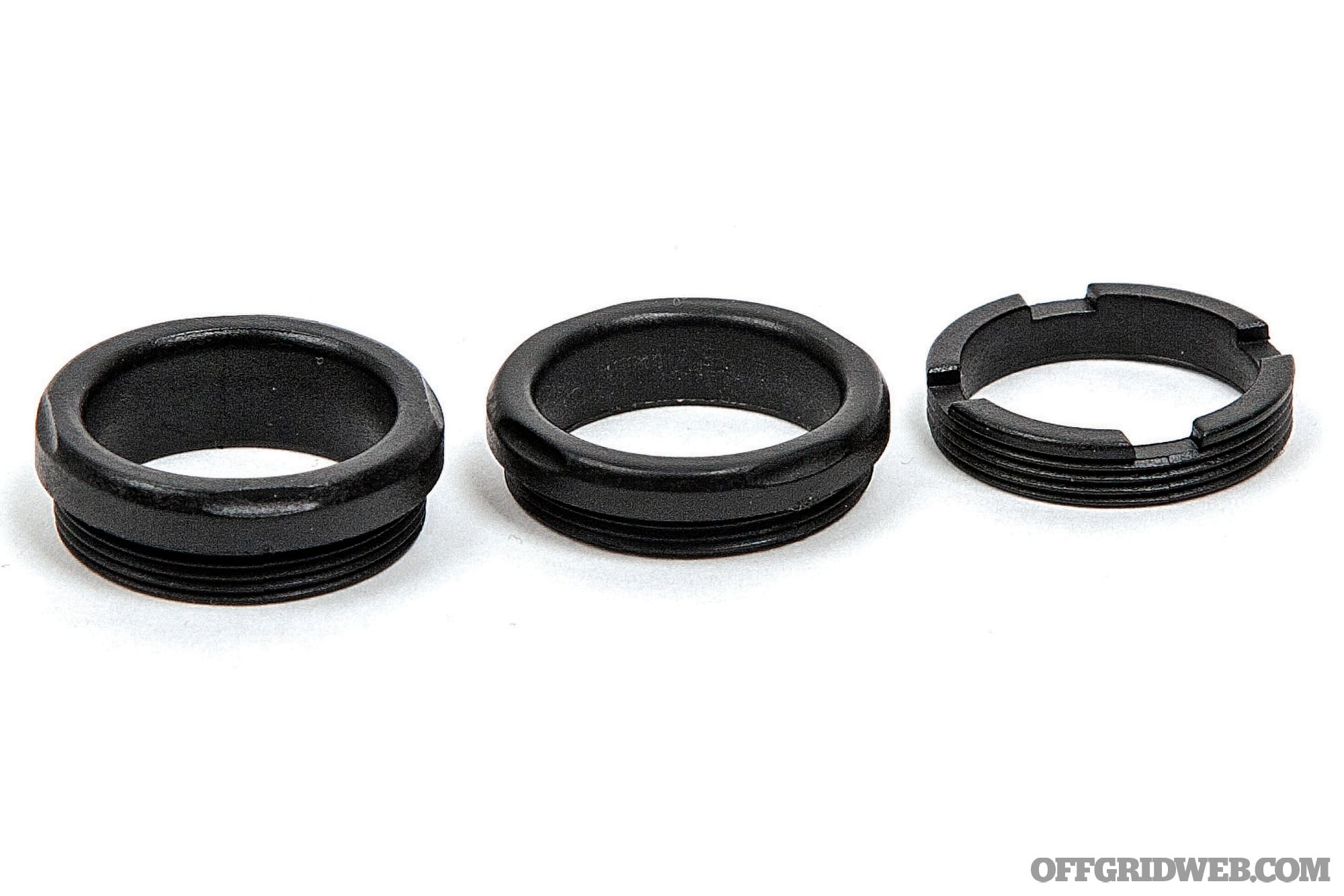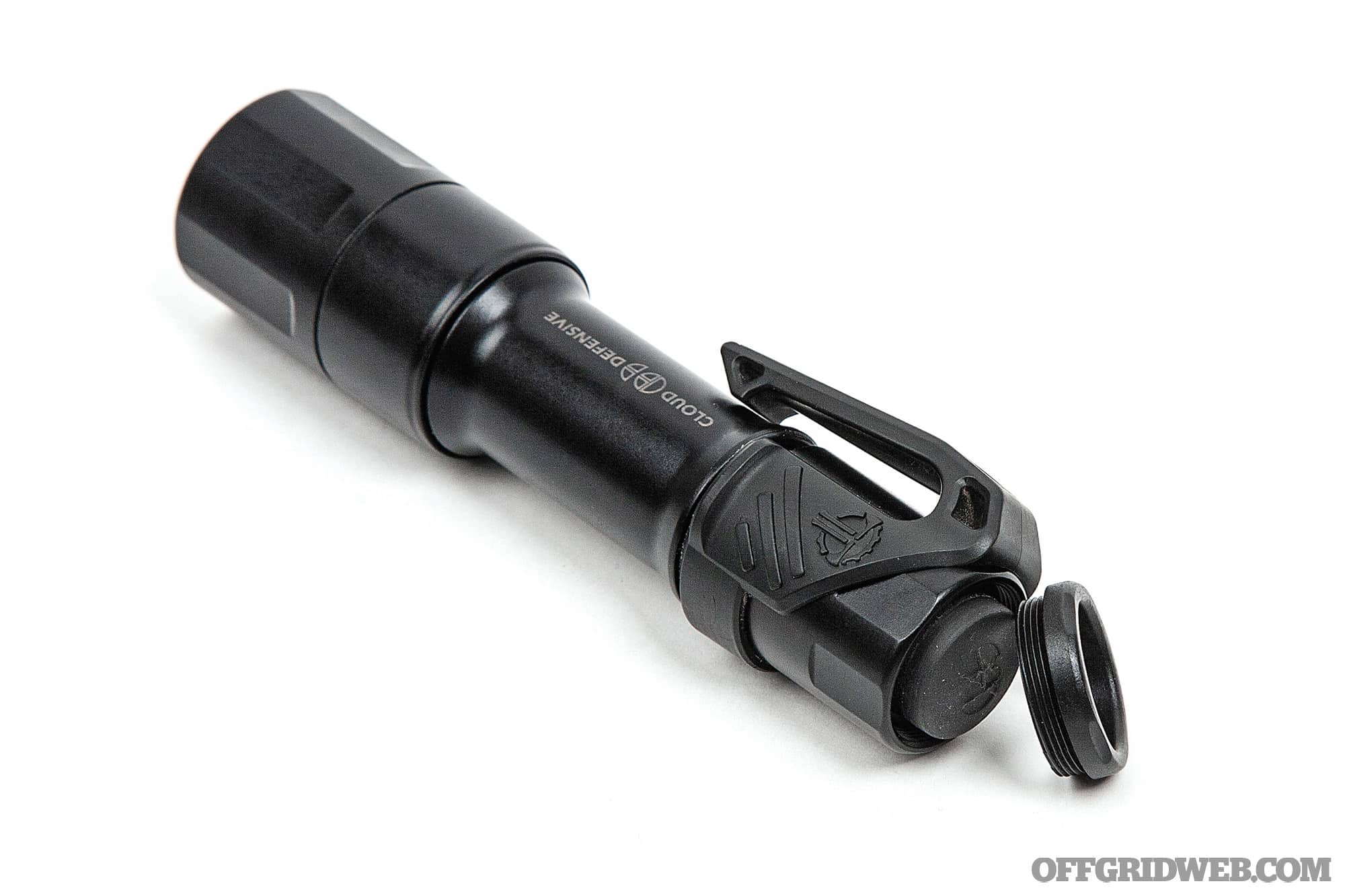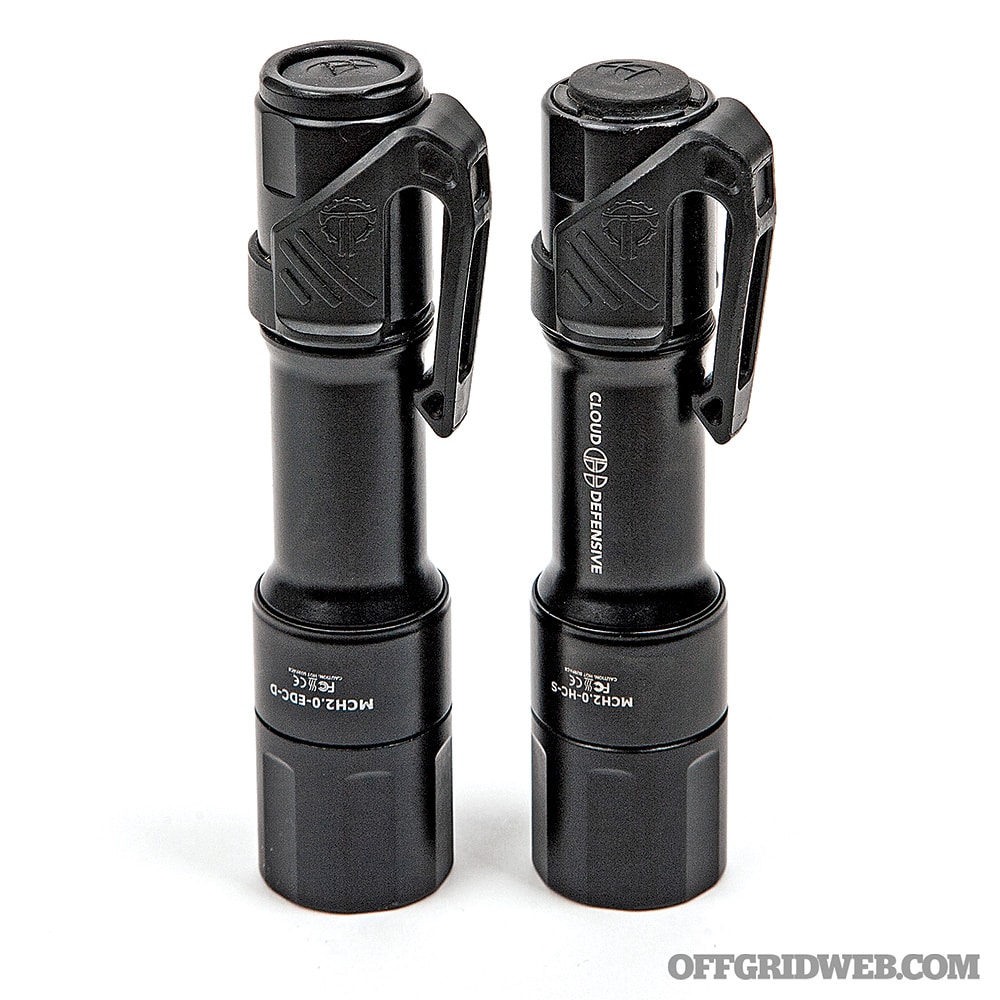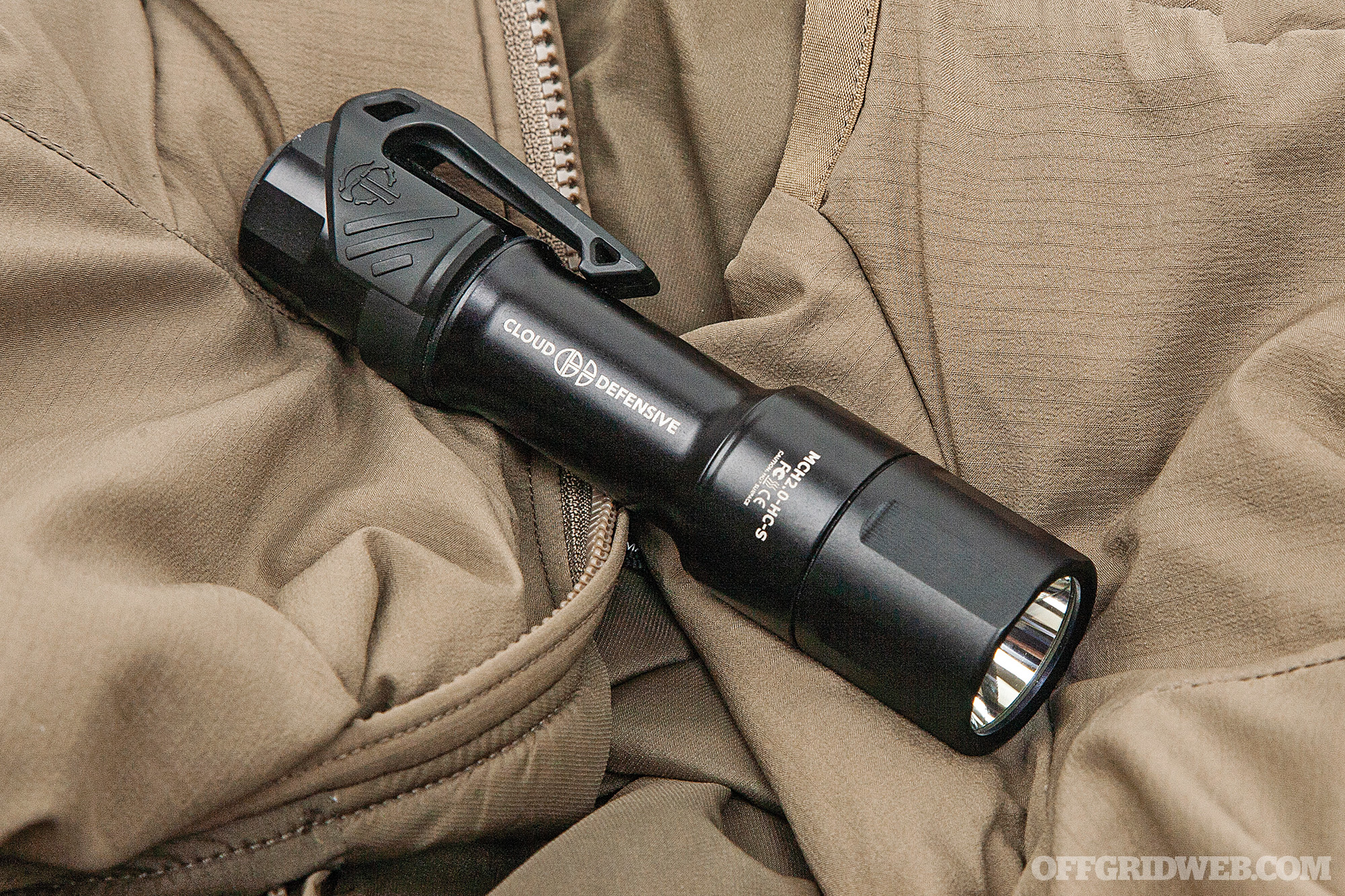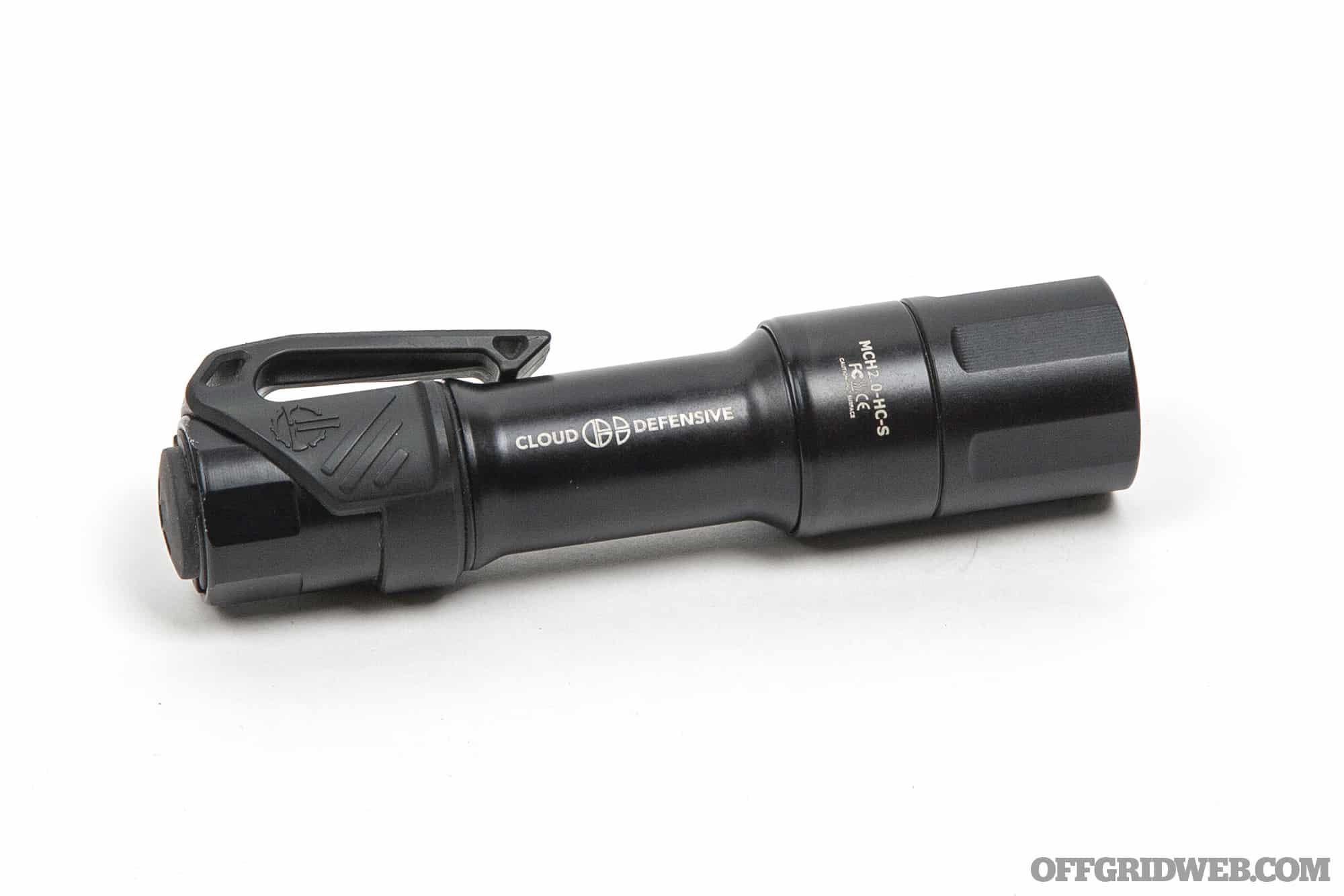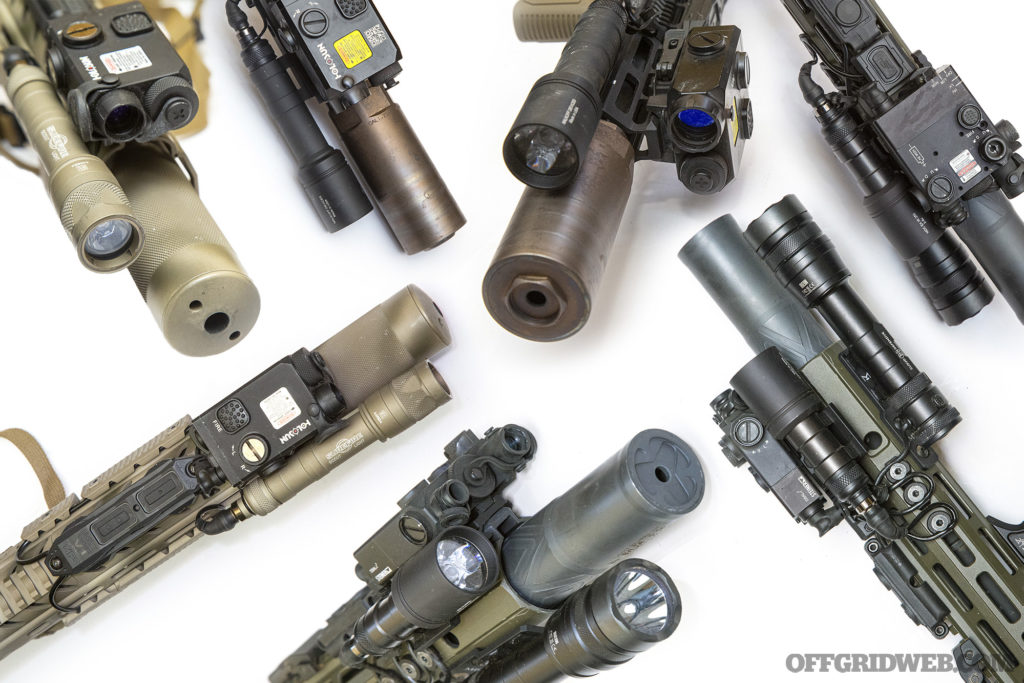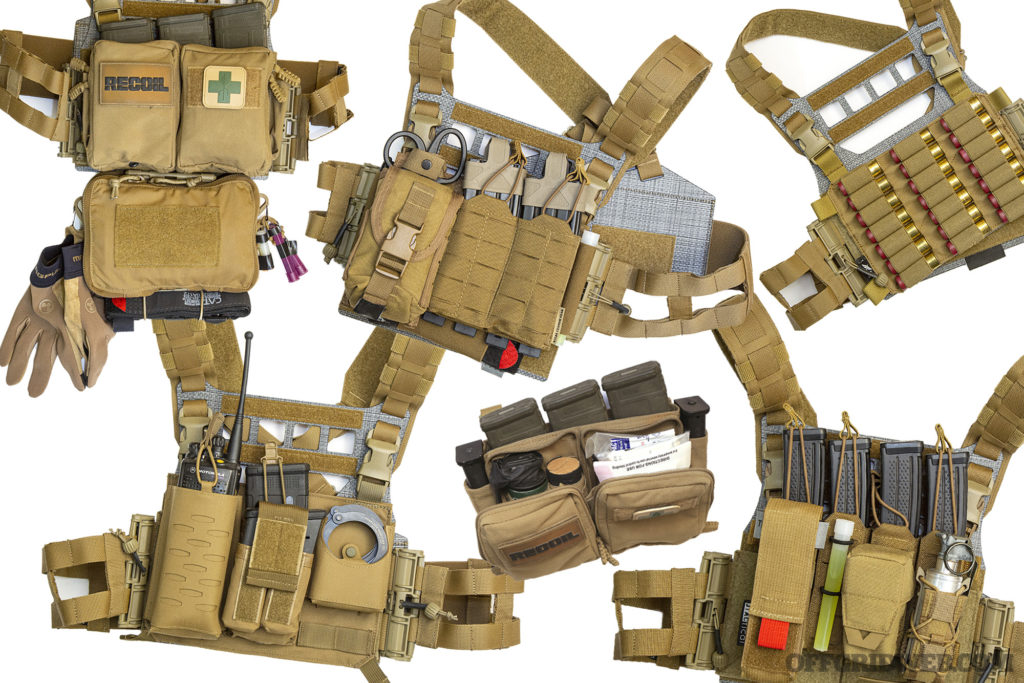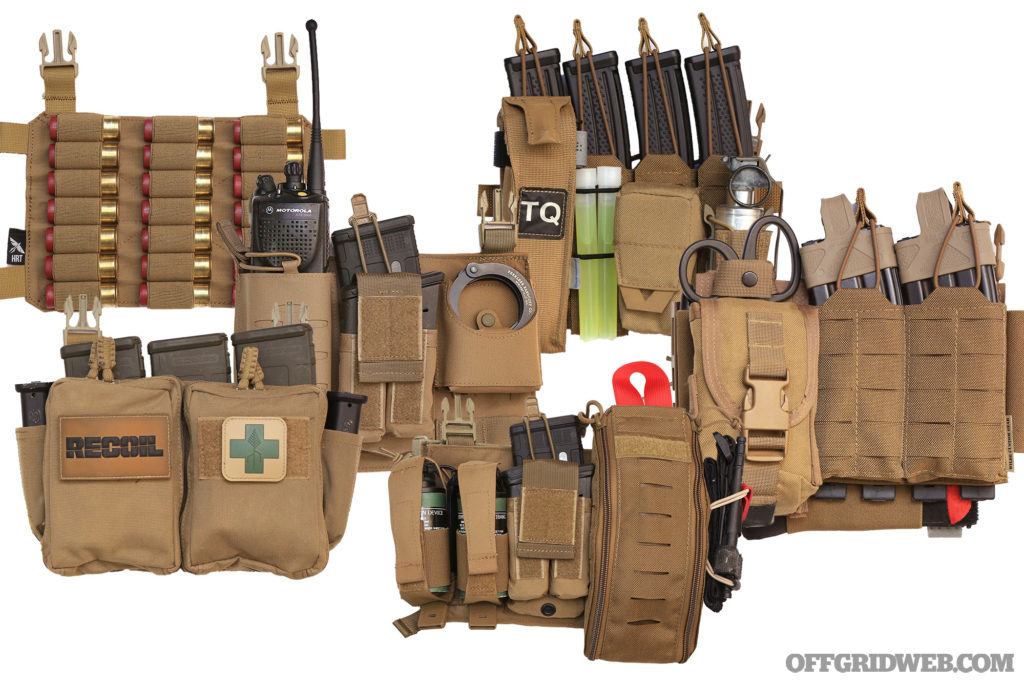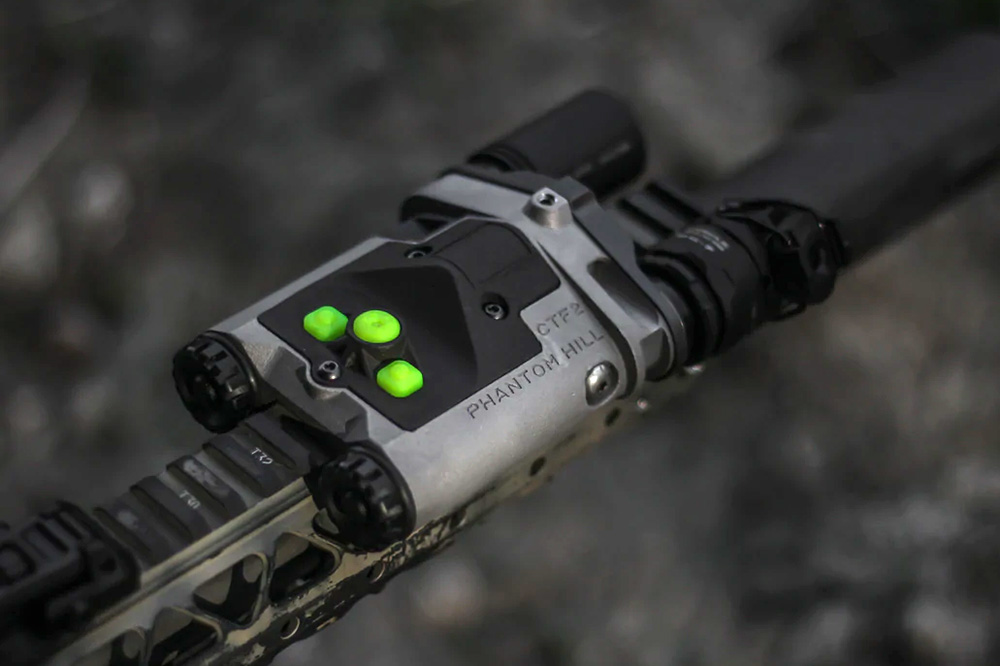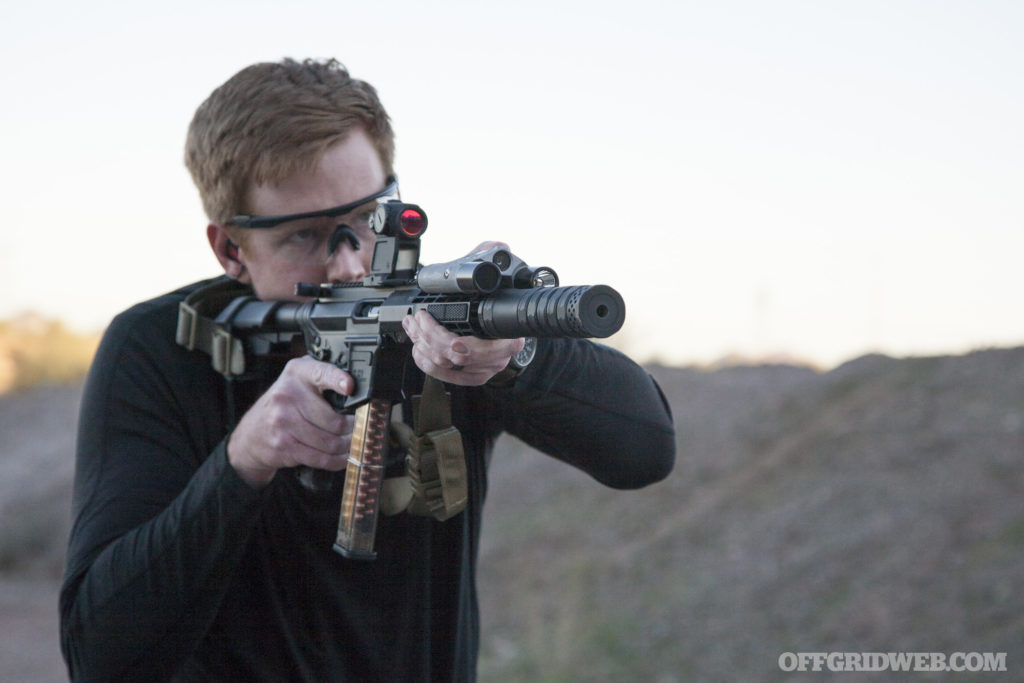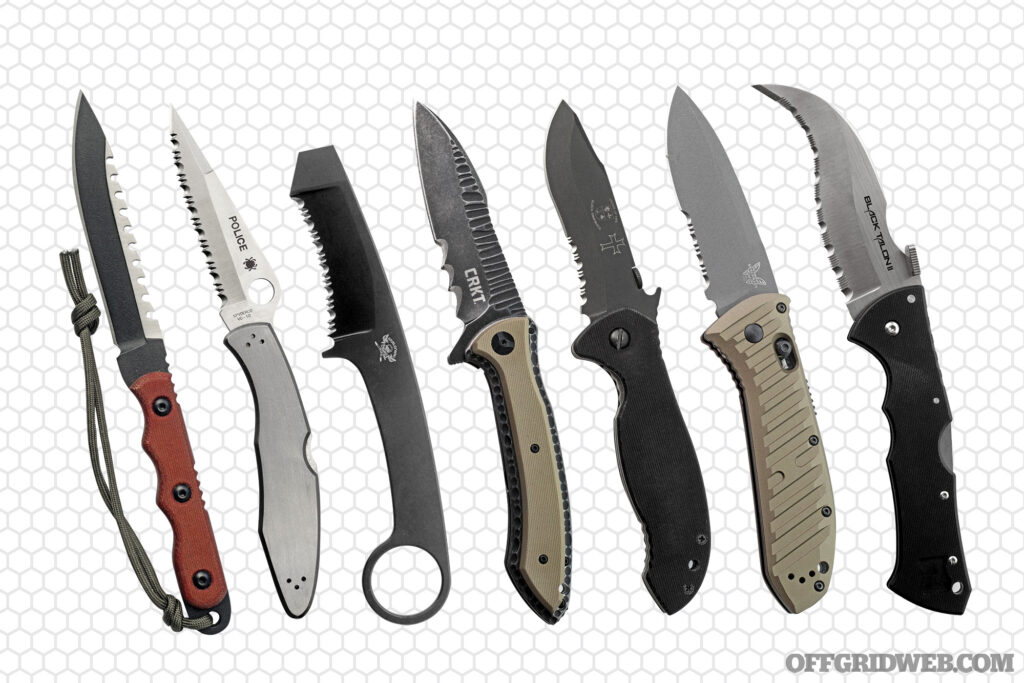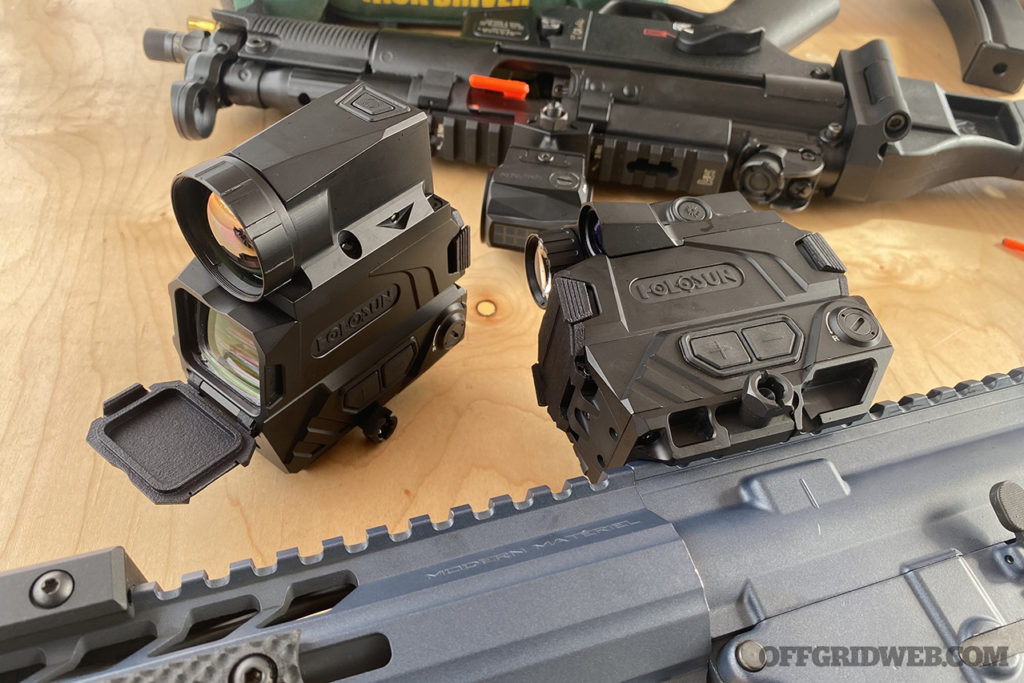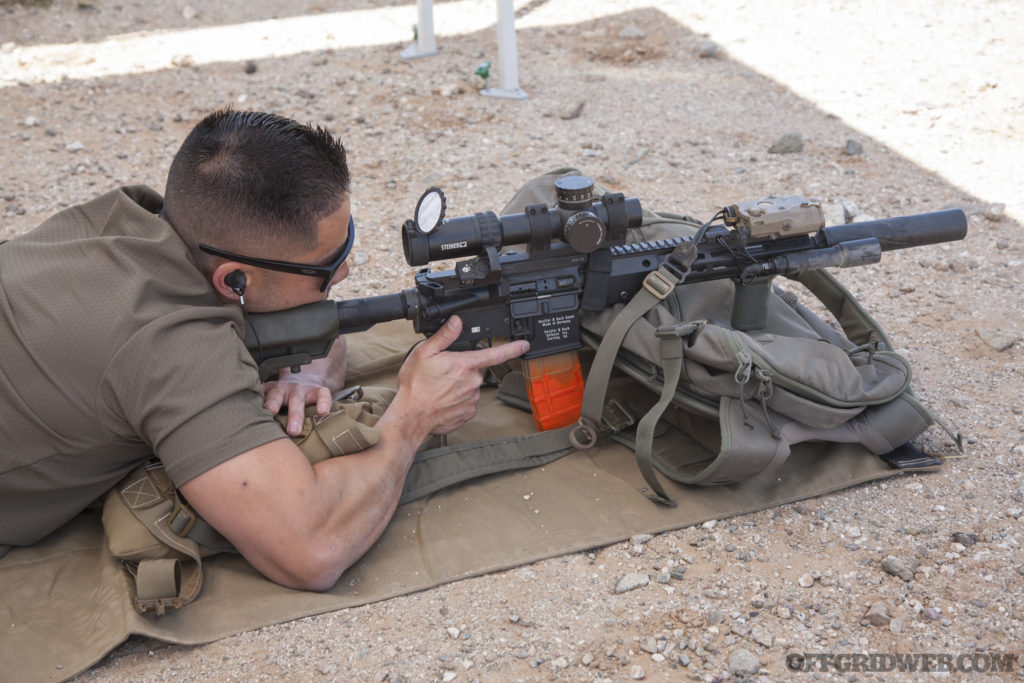Editor’s Note: With impeccable timing, a new version of the Cloud Defensive MCH was announced this week. It appears to address my critiques later in this article, and I’m currently working on getting a sample of the updated MCH to compare. When that happens, I’ll post a follow-up. Until then, read on for my review of the original MCH, which is still available for purchase on Cloud’s website at a reduced price of $165.
Modularity is a convenience we often take for granted. Many of the important items we purchase use modular designs to allow customization and upgrades, either at the time of purchase or later down the line. For example, look back at the early days of the automobile. In 1909, Henry Ford famously said each Model T buyer could “have a car painted any color that he wants so long as it’s black.” Fast-forward to today — when you buy a new truck, you’re presented with an almost-overwhelming list of submodels, trim levels, factory options, and dealer-installed equipment. Would you like two-wheel drive or four-wheel drive? Gas or diesel? How many doors? Which bed length? And we won’t even get started discussing all the paint colors, upholstery styles, and other cosmetics you can pick. Since our vehicles are expensive items we rely on every day, it makes sense to consider the options carefully before buying.
Above: The Cloud Defensive MCH pictured alongside some of my other EDC gear — modified Glock 45 in LAS Concealment Ronin L holster, Skeleton Optics glasses, Spyderco Para 3 knife, Bertucci A-4T watch, and Zippo lighter.
Flashlights are another important tool many of us rely on daily, and we’d argue that the configuration of your flashlight can be just as important as the configuration of your vehicle. Much like settling for a two-wheel drive truck might cause you to get stuck in the middle of nowhere, settling for a flashlight with low output or short battery life can leave you stumbling around in the dark. You should always do your homework before buying any flashlight — especially one you carry every day.
WMLs vs. Handhelds
Above: This 11.5-inch SBR features a Cloud Defensive REIN weapon-mounted light, which shares some design features and components with the MCH handheld flashlights.
Anyone who has set up a weapon-mounted light (WML) on a rifle knows that modularity is the name of the game. WMLs such as the SureFire Scout and Streamlight ProTac can be configured with various body lengths, heads, tailcaps, and remote pressure switches. They can also be installed in various Picatinny, KeyMod, and M-LOK mounts from their respective manufacturers or a multitude of aftermarket companies. Unfortunately, the same can’t be said for most handheld flashlights, which are often sold in a “one size fits most” configuration. If you’re lucky, you can choose from a few sub-models or swap some parts, but the modularity is generally much more limited.
The Cloud Defensive MCH Formula
The Mission Configurable Handheld (MCH) from Cloud Defensive was created from day one as a fully modular flashlight platform. All four of its main components can be mixed and matched:
- Head
- Body
- Tailcap
- Pocket clip
Read on as we examine the options that the MCH offers in each of these categories.
Head
Arguably the most important parts of any flashlight are its emitter and reflector, since these two components determine the brightness, efficiency, color, and beam pattern. Collectively, they’re called the head, which is appropriate since they also contain the electronic brain that manages the light’s functions (brightness modes, thermal regulation, voltage regulation, etc.). Four heads are available for the MCH:
- HC Single Output
- HC Dual Output
- EDC Single Output
- EDC Dual Output
Above: To the naked eye, the HC and EDC heads look similar, but the sudden flash of our studio lights revealed Cloud’s proprietary lens coating on the HC. It shifts light output from a warm hue to a more neutral white.
The High Candela (HC) head is exactly what its name implies. For those unfamiliar with the term, candela is basically a measurement of the intensity of a beam of light. It’s important to distinguish this from lumens, which measure the total quantity of emitted light. Lumens tell you how much light is produced; candela tells you how that light is focused. So, the HC offers a tightly focused beam pattern that’s ideal for throwing light long distances and pushing through barriers such as tinted windows. This head produces a maximum of 71,000 candela and 1,100 lumens. It also features a proprietary glass coating that generates neutral white light (5,200K).
The Every-Day Carry (EDC) head is less specialized than the HC head, with a balance between strong candela and wide spill. It’s preferable for short- to medium-range general use. Maximum output is 40,000 candela and 1,400 lumens; color temperature (4,500K) is warmer than the HC and similar to an incandescent light bulb.
Single or Dual Output
Each of the heads is available in either a Single Output or Dual Output version. Single output is self-explanatory — full power all the time. Dual output toggles between 100-percent power and a 10-percent-power low setting (e.g. 4,000 candela/140 lumens with EDC head) each time the button is pressed. This is useful for close-up tasks, such as reading a map.
Above: This Cloud-Defensive-branded Nitecore charger is included with every MCH. It offers an extra slot for a spare battery, so you can always have one topped off.
Body
Two body sizes are available for the MCH: Full Size and Micro.
The Full Size body uses a larger 18650 rechargeable battery and measures 5.2 inches long including head and tail cap. Maximum run time at full output is 120 minutes with the EDC head or 150 minutes with the HC head.
The Micro body uses an 18350 rechargeable battery and measures 4 inches long with head and tail cap. As you’d expect, maximum run time will be shorter with a smaller battery, specifically 35 minutes with the EDC head or 50 with the HC.
Above: An orange flat-top 18650 battery comes with the MCH. It can also accept most button-top cells, such as the blue one pictured here. However, it should not be used with CR123 batteries — doing so will void the lifetime warranty. (Note: This is not the case for the new “dual fuel” MCH.)
Tailcap
There’s only one tailcap included with each MCH, but it’s still modular thanks to Cloud’s patented Adjustable Negligent Discharge Protection system. This involves a set of three included, interchangeable polymer rings that thread into the tail cap around the rubber activation button. With the thinnest ND Protector ring installed, the MCH’s button is extremely easy to activate, but it’s also easy to press inadvertently while it’s in a pocket or pouch. The polymer rings get progressively thicker, with the thickest requiring a very deliberate press to the center of the button to activate the light.
Above: Three ND Protector rings are included with the MCH: large, medium, and small.
Above: The ND Protectors thread into the tailcap around the rubber activation button.
Pocket Clip
Finally, we have the clip that retains the light in a pocket. Each MCH ships with a Thyrm Lo-Pro pocket clip, which (contrary to its name) is made from a relatively thick but very sturdy polymer material. There’s also an optional Thyrm Switchback clip, which includes a pocket clip plus an integrated finger ring. The ring provides increased retention of the light for high-intensity activities like shooting or grappling, and it can also be used alongside a pistol in a two-handed grip (the Switchback Technique).
Cloud Defensive also states that a steel, deep-carry pocket clip will be offered for the MCH. However, the product page mentions that this metal clip is “currently seeing manufacturing delays” and does not provide an ETA for its availability. At time of writing, the MCH has been available for almost 10 months, but the clip hasn’t become available yet.
Colors
In case all these options weren’t enough for you, Cloud Defensive also offers four colors to choose from. There’s black, flat dark earth, olive drab, and clear anodized; the latter simply reveals the natural gray color of the 6061-T6 aluminum the MCH is made from. The company has even offered limited runs of “Moonshine” MCHs, which use random combinations of mismatched colors (e.g. FDE head with black body and OD green tailcap).
My Impressions
I received a pair of MCHs to test and have carried at least one of them every day for nearly a year. I’ve used them in a wide variety of environments, from the shooting range to the garage to remote hiking trails and have developed some opinions on aspects of the MCH I love and aspects I’m not so fond of.
MCH Configurations
Thanks to the modular design, I was able to order and set up these MCHs exactly how I want them. Run time is a much bigger priority for me than saving a small amount of pocket space, and I prefer a light that’s long enough for a full-fist grip, so the Full Size was an obvious choice for both lights. I also went with the sleeker Lo-Pro pocket clip without the Switchback ring for both lights.
Above: This photo shows the difference between the large and small ND Protectors. Each gives the light a slightly different activation feel.
One MCH is set up with a HC Single Output head and the thinnest ND Protector ring. This is what some people would call a “tactical” flashlight due to its specialized nature, and it’s the light I reach for if I need long-distance or highly focused visibility. It spends most of its time in the center console of my truck and gets used for tasks such as scanning dark parking lots.
The other MCH is set up with an EDC Dual Output head with the medium ND Protector. This light can be found in my pocket most of the time; I think the versatility of two brightness modes and a balanced beam pattern is ideal for every-day carry. I also like a little extra protection on the activation button to prevent the light from turning on and burning a hole in my jeans (or just draining the battery).
The Pros
There’s a lot to like about the Cloud Defensive MCH. Although it’s not perfect (more on that shortly) the MCH EDC Dual has become my favorite daily carry light for the time being. The MCH HC Single is also an outstanding tool, but one I find myself needing less frequently.
Power: Both versions of the MCH are surprisingly effective at slicing through the darkness, and that’s something you can’t know from numbers alone. The specific combination of lumens, candela, and color temperature cause these lights to feel potent, even when used side-by-side with comparable lights from SureFire and Streamlight. I was also pleasantly surprised to see how much long-range throw the EDC head has — it’s not as effective as the HC, but it’s no slouch.
Rechargeability: Frankly, I’m tired of constantly replacing the disposable CR123 batteries in my other flashlights. It’s tedious, expensive, and probably polluting the habitat of some endangered frog species. Recharging the 18650 battery is convenient, and the included dual-slot charger allows me to keep a spare ready to swap in at any time.
Reliability: I don’t use my flashlights as hammers, but they do get dropped occasionally and exposed to moisture, dust, and dirt. I haven’t encountered any malfunctions with either of my MCHs, which is more than I can say for some of the other flashlights I’ve owned. The ND protector also counts toward this point, since it helps prevent the light from shining into my pocket until the battery dies.
Modularity: It’s great that the MCH ecosystem has so many options to choose from. I also appreciate that the components are interchangeable with Cloud Defensive’s REIN series of weapon lights; the MCH HC is essentially a REIN 2.0 you can carry in your pocket.
The Cons
No Mode Memory (Dual Models Only): If there’s one thing that has made me consider switching to a different flashlight, it’s this. I love the convenience of having two output modes, and more importantly, two useful output modes (not 1,200 lumens or 5 lumens — I’m looking at you, SureFire EDCL2-T). But I hate that I’m always wondering which output mode I’m going to get when I turn on the light. That’s because, unlike most other dual-mode lights on the market, Cloud’s dual-mode head has no mode memory. It simply alternates through a high-low-high sequence with each button press.
SureFire dealt with this issue by always defaulting to high mode, while a quick double-tap gives you low mode. Streamlight has a more complex programmable Ten-Tap system that lets users choose between high-strobe-low, high only, or low-high sequences (each toggled by double- or triple-taps of the switch). Either way, with those manufacturers I always know which mode I’m getting the first time I activate the light — not so for the MCH.
If you can remember to stage the light in your preferred mode by cycling to the previous mode every time you turn it off, there’s no problem. In reality, you’ll probably end up tapping the button a few times to end up at the right mode each time you use a dual-mode MCH. That may not sound like a big deal, but if your eyes have acclimated to darkness, you may temporarily blind yourself by unintentionally activating all 1,400 lumens.
Imperfect Pocket Clip: This is a relatively minor gripe, but I’m not sold on the Thyrm Lo-Pro clip that’s currently included with the MCH. It works, and I have no doubts about its durability, but it’s much bulkier than a typical metal pocket clip. Cloud originally promised a metal clip for the MCH, but it’s still nowhere to be seen. I understand that manufacturing delays happen, but I’m a little disappointed that the clip is still unavailable after 10 months.
Closing Thoughts
Overall, I’m happy with the MCH, especially considering this is Cloud Defensive’s first handheld flashlight design. With the recent release of the REIN 3.0 weapon light — which offers 100,000 candela and dual-fuel 18650/2xCR123 compatibility — it seems likely that there will be an updated version of the MCH that uses the new REIN head. If this also includes dual-mode memory and a metal pocket clip, it’ll be tough to beat. (Editor’s Note: It appears these updated MCH predictions were correct, but instead of the dual mode memory I hoped for, Cloud Defensive created a programmable 5-mode system! I’m looking forward to testing it soon.)
SOURCE
Cloud Defensive > clouddefensive.com
Related Posts
The post Review: Cloud Defensive MCH Flashlights appeared first on RECOIL OFFGRID.


